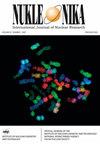在线免费访问等离子体物理实验
IF 0.3
4区 物理与天体物理
Q4 CHEMISTRY, INORGANIC & NUCLEAR
引用次数: 0
摘要
摘要远程控制实验室在新冠肺炎大流行期间发挥了巨大作用。事实上,他们已经在那里,但缺乏可见性。这一外部触发因素促使该学院面临全球挑战,开始更一致、更成熟地提供远程实验。高级技术研究所(IST)自2000年以来一直在提供几项远程实验,但由于技术老化,需要更新。因此,远程教育实验框架(FREE)是基于新的网络技术创建的。除了已经开发的最多样化的实验外,FREE还包括两个针对高级物理学生的实验:朗缪尔探针和电磁(EM)腔。两者都允许用户配置各种参数,并实时访问结果或稍后查看。所有这些访问都是使用浏览器(在PC或手机上)完成的,无需安装其他软件。实验执行的结果存储在数据库中并可下载,允许用户进行各种分析并确定相应的等离子体密度和温度。在本文中,我们将介绍FREE是如何在两个实验的实施中使用的,并深入了解它们的教学方法,例如:(i)如何执行实验,(ii)使用获得的典型数据集,以及(iii)用户从中检索信息所需的相应分析。本文章由计算机程序翻译,如有差异,请以英文原文为准。
Online and FREE access to plasma physics experiments
Abstract Remote controlled laboratories had a great push during the COVID-19 pandemic. In fact, they were already out there but lacking in visibility. This external trigger pushed the academy to face a global challenge to start offering remote experiments more consistently and maturely. Instituto Superior Técnico (IST) has been offering several remote experiments since 2000 but with the need for an update due to technological aging. As such, the framework for remote experiments in education (FREE) was created based on new web technologies. In addition to the most diverse experiments that had already been developed, FREE includes two experiments that aimed at advanced-level physics students: the Langmuir probe and the electromagnetic (EM) cavity. Both allow users to configure the various parameters and to access the results in real time or check back later. All this access is done using a browser (on a PC or mobile phone) without the need to install additional software. The results of an experimental execution are stored in a database and are downloadable, allowing users to do various analyses and to determine the corresponding plasma density and temperature. In this paper, we will introduce how FREE was used in the implementation of both experiments and give an insight into their didactic approach, such as: (i) how to perform an experimental execution, (ii) the typical data set obtained with, and (iii) the corresponding analysis necessary for the user to retrieve information from it.
求助全文
通过发布文献求助,成功后即可免费获取论文全文。
去求助
来源期刊

Nukleonika
物理-无机化学与核化学
CiteScore
2.00
自引率
0.00%
发文量
5
审稿时长
4-8 weeks
期刊介绍:
"Nukleonika" is an international peer-reviewed, scientific journal publishing original top quality papers on fundamental, experimental, applied and theoretical aspects of nuclear sciences.
The fields of research include:
radiochemistry, radiation measurements, application of radionuclides in various branches of science and technology, chemistry of f-block elements, radiation chemistry, radiation physics, activation analysis, nuclear medicine, radiobiology, radiation safety, nuclear industrial electronics, environmental protection, radioactive wastes, nuclear technologies in material and process engineering, radioisotope diagnostic methods of engineering objects, nuclear physics, nuclear reactors and nuclear power, reactor physics, nuclear safety, fuel cycle, reactor calculations, nuclear chemical engineering, nuclear fusion, plasma physics etc.
 求助内容:
求助内容: 应助结果提醒方式:
应助结果提醒方式:


